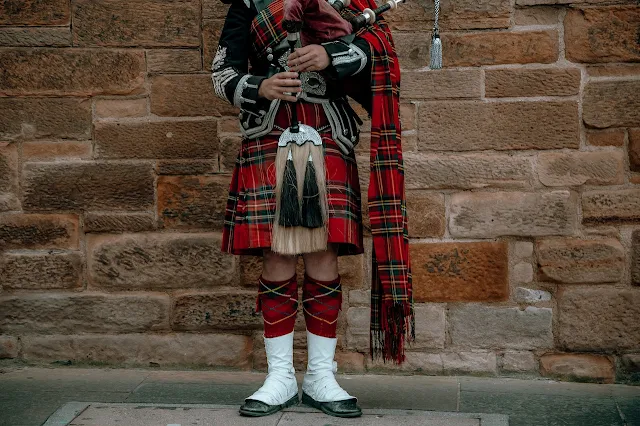 |
| The Kilt |
The kilt is a garment that has a long and storied history, dating back to the 16th century. It is a type of skirt made of fabric that is pleated and draped around the body, fastened at the waist with a belt or buckle. The kilt is traditionally worn by men in Scotland, and it is considered an important part of Scottish culture and identity.
The origins of the kilt are somewhat disputed, but it is generally believed to have evolved from the great kilt, a garment worn by the Gaelic-speaking people of Scotland in the 16th and 17th centuries. The great kilt was a large piece of fabric that was draped over the body and fastened at the shoulder with a brooch or pin. It could be worn in a variety of ways, including as a cloak or a blanket.
In the 18th century, the kilt as we know it today began to take shape. The kilt became shorter and more fitted, and the pleats were sewn down to create a more defined shape. This version of the kilt, known as the small kilt or the modern kilt, was made popular by the Scottish military, who adopted it as part of their uniform.
Today, the kilt is worn for a variety of occasions, including formal events, weddings, and traditional Scottish dance and music performances. It is also a popular choice for everyday wear in Scotland, particularly in the Highlands. The kilt is often worn with other traditional Scottish garments, such as a sporran (a type of purse worn at the waist), a sgian dubh (a small knife worn in the sock), and a tartan (a patterned fabric associated with a particular Scottish clan or family).
The kilt is an important symbol of Scottish culture and pride, and it is recognized and celebrated around the world. It is a garment that has evolved over time, but it remains an integral part of Scotland's history and identity.
